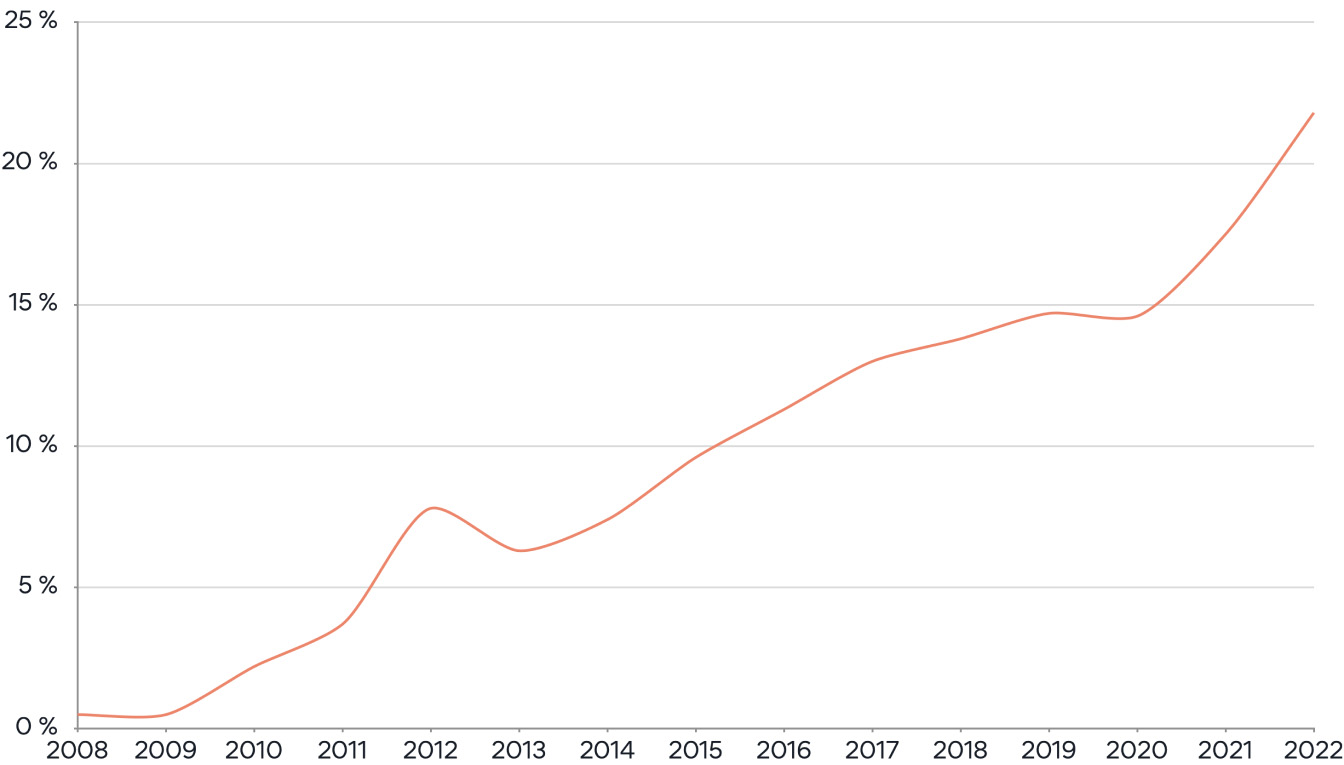Unlocking global talent: How to hire international employees
Master the art of global tech recruitment and tap into a world of opportunities for your business. Learn how to hire international employees with Nioomi.
arrow_forward Read more7 min read
Discover the benefits of fostering diversity, equity, and inclusion in your workplace, and gain insights into implementing a successful DEI strategy.

Diversity, equity, and inclusion (DEI) are values as well as an organizational framework to promote fairness and full participation of all groups in business.
Colloquially, these terms are sometimes used synonymously. A modern and inclusive workplace aims to correct inequalities and prevent discrimination.
And that’s important because issues like workplace discrimination and the gender pay gap, unfortunately, are still a reality. The good news is that this is changing, albeit slowly.
With awareness rising and politics creating respective frameworks, developments like an increase of women on executive boards in German DAX companies are gradually taking place.

DIW Berlin. (January 18, 2023)
Every year, Germany requires 400,000 skilled professional migrant workers to fill the demand in booming industries. About one-third of these jobs are specialists in the IT sector.
A lack of new local young talent, the advancing demographic change, and the emigration of qualified specialists are fueling the problem. The shortage of skilled (IT) professionals in Germany is real.
As larger companies with higher budgets get ahead of the international recruiting game, small and medium-sized enterprises that typically drive innovation are disadvantaged.
Now, while some recruiters and headhunters may initially feel overwhelmed by the task of hiring foreign talent, there is simply no way around it.
Plus, many HR professionals have recognized the manifold of opportunities that come with inclusive hiring practices.
Different perspectives and filters, experiences, and ideas that come with international teams (so-called multidimensional and intersectoral thinking) have the potential to increase sales and profits through
At the same time, the sense of community within the company is raised. As a result
All this ultimately creates smart and lasting solutions, which increase customer satisfaction and drives profits. Likewise, new and emerging markets, customer bases, and niches can be identified through a fundamental understanding of cultures and practices in foreign markets.
And you’re in good company: industry leaders Infineon, Agilent Technologies, and SAP are among the most diverse organizations in Germany.
To sum it up, DEI in the workplace is the right thing to do, and it ensures the long-term health, resilience, and innovative power of companies.
Top 20 German companies in 2022 by inclusivity score*
| Rank | Company | Score | Main industry sector |
|---|---|---|---|
| 1 | Infineon | 8.22 | Semiconductors |
| 2 | Hugo Boss | 7.90 | Clothing and accessories |
| 3 | Rheinmetall | 7.86 | Automotive (producers and suppliers) |
| 4 | AbbVie | 7.75 | Drugs and biotechnology |
| 5 | Texas Instruments | 7.75 | Semiconductors |
| 6 | Agilent Technologies | 7.73 | Health care equipment and services |
| 7 | Aareal Bank | 7.73 | Banking and financial services |
| 8 | PUMA | 7.72 | Clothing and accessories |
| 9 | EnBW | 7.71 | Electric utilities |
| 10 | Adva Optical Networking | 7.70 | Semiconductors |
| 11 | Knorr-Bremse | 7.70 | Automotive (producers and suppliers) |
| 12 | SAP | 7.67 | Software and services |
| 13 | RAG | 7.67 | Oil and gas operations |
| 14 | Merck | 7.65 | Drugs and biotechnology |
| 15 | Barmenia Versicherungen | 7.65 | Insurance |
| 16 | RWE | 7.65 | Electric utilities |
| 17 | Keysight Technologies | 7.64 | Semiconductors |
| 18 | Adidas | 7.63 | Clothing and accessories |
| 19 | Deutsche Bundesbank | 7.62 | Banking and financial services |
| 20 | Fiducia & GAD IT | 7.61 | Software and services |
*On a scale of 0 to 10 according to company inclusivity measure concerning age, gender, ethnicity, disability, sexual orientation
Implementing DEI in the talent acquisition strategy and company culture is more than just a one-off checkbox to be done overnight and ticked off. Instead, it is an ongoing action and long-term process.
Here is how to get started with creating a diverse company - whether you are an in-house recruiter, freelance headhunter, or staffing agency.
Leverage the potential of diversity for your business by giving it a top-level priority and visibility while encouraging a bottom-up and inclusive implementation process.
Depending on the size of the company, different measures, and an adjusted scope make sense. However, the basic procedure remains the same.
This framework is the basis for a more inclusive and equitable talent acquisition process and company culture that fosters diversity ensures equity, and promotes an inclusive work environment.

Implementing a successful DEI strategy requires changes - some smaller and easier, others more complex and challenging.
Whether you have already taken steps toward a more diverse, equitable, and inclusive workplace or are just getting started with this process - DEI is an ongoing effort that has become mandatory rather than optional in today’s world. It requires long-term commitment and active involvement from leadership and employees alike.
Are you looking for IT experts and tech specialists? Get access to Nioomi’s international talent pool of IT developers, engineers, and more.
For DEI transformation and implementing change processes, Nioomi partners with HR visionary Heidi Hofer, among others.
Heidi has been assisting companies for over 25 years in creating a future-proof HR culture, including successfully integrating international employees. Contact Heidi to discuss your individual diversity hiring strategy and close the DEI gap.
Master the art of global tech recruitment and tap into a world of opportunities for your business. Learn how to hire international employees with Nioomi.
arrow_forward Read moreGermany faces a significant shortage of 137,000 IT and tech experts. Discover the best countries for global hiring to bridge this gap.
arrow_forward Read moreFind top IT talent worldwide and make relocation effortless.
Sign up Take a tour